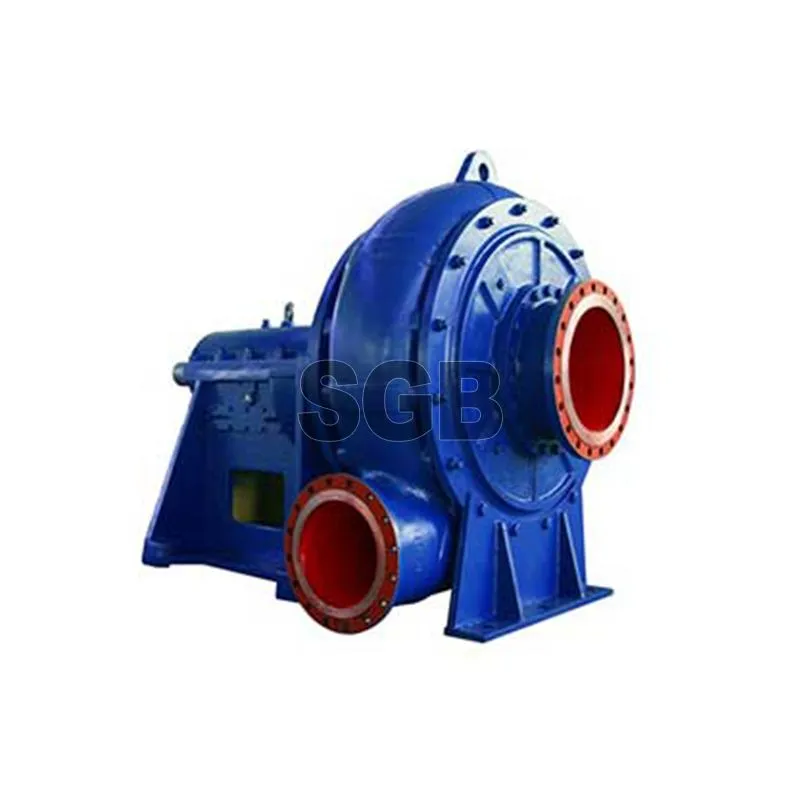Mar. 26, 2024
Dredger pumps play a pivotal role in various industries, including mining, construction, and marine applications. They are essential for moving large volumes of liquids, slurries, and sediments efficiently. Selecting the right dredger pump is crucial for ensuring optimal performance, productivity, and cost-effectiveness in any dredging operation.

The hydraulic design of a dredger pump is one of the most critical factors to consider when making a selection. It determines the pump's efficiency, capacity, and ability to handle different types of materials. Efficient hydraulic design ensures smooth flow patterns, minimal turbulence, and maximum energy transfer, resulting in higher performance and lower operating costs.
When choosing a dredger pump, it's essential to consider the compatibility of its materials with the substances being pumped. Corrosion-resistant materials such as stainless steel, hardened iron, and specialized coatings are often required to withstand the abrasive and corrosive nature of dredging materials. Additionally, selecting the right material combinations can extend the pump's lifespan and reduce maintenance costs over time.
Selecting the appropriate pump size and capacity is crucial for achieving the desired dredging results. Choosing a pump with the right flow rate and discharge pressure ensures optimal efficiency and productivity while minimizing energy consumption and operating costs. Factors such as dredging depth, distance, and material density must be carefully evaluated to determine the ideal pump specifications for each application.
Dredger pumps can be powered by electric motors or diesel engines, each with its advantages and limitations. Electric pumps offer greater efficiency, lower emissions, and quieter operation, making them ideal for environmentally sensitive areas and indoor applications. On the other hand, diesel pumps provide portability, versatility, and reliability in remote locations or areas with limited access to electricity. Selecting the appropriate power source depends on factors such as availability, environmental regulations, and operational requirements.
Regular maintenance and timely servicing are essential for maximizing the lifespan and performance of dredger pumps. Choosing a Sand dredge pump with accessible components and easy maintenance procedures simplifies upkeep and reduces downtime, ensuring continuous operation and minimal disruptions to dredging activities. Additionally, partnering with a reputable manufacturer or supplier that offers comprehensive support, spare parts availability, and technical assistance is critical for long-term reliability and peace of mind.
While upfront cost is an important consideration, it's essential to look beyond price tags and consider the total cost of ownership over the pump's lifespan. Investing in a high-quality dredger pump may require a higher initial investment but can result in significant savings in terms of maintenance, repairs, and downtime avoidance. Conducting a thorough cost-benefit analysis and considering factors such as efficiency, reliability, and serviceability can help identify the most cost-effective solution for each dredging project.
In today's environmentally conscious world, minimizing the ecological footprint of dredging operations is paramount. Choosing energy-efficient pumps with low emissions and pollution control features helps reduce environmental impact and comply with regulatory requirements. Additionally, implementing sustainable dredging practices such as sediment management, habitat restoration, and ecosystem preservation promotes environmental stewardship and ensures long-term sustainability.
Selecting the perfect dredger pump requires careful consideration of various factors, including hydraulic design, material compatibility, pump size and capacity, power source, maintenance, cost, and environmental impact. By prioritizing efficiency, reliability, and environmental sustainability, dredging professionals can ensure optimal performance, productivity, and profitability in their operations.
Previous: Are Monoblock Heat Pumps Suitable for All Climates?
Next: Understanding the Functioning of a Pneumatic Piston Pump
If you are interested in sending in a Guest Blogger Submission,welcome to write for us!
All Comments ( 0 )